


 |
|
Canadian Doug Shand is a serious Thistle collector. He is an auto refinish tech by trade, with 34 years of experience in the field of auto restoration and refinishing. Doug provided a lot of information and pictures for this Thistle. Thank you Doug! Starting January2012 till April 2012) Doug restored a Thistle Chiefstain. I certainly appreciate the opportunity Doug has given us in regards to allowing us to share this with other interested collectors.
|
| The very first step when attempting to do any type of restoration is to photograph as many aspects of the vehicle and label the location of all of the hardware, pieces, etc. This will be of great benefit when it comes to reassembling the completed project. This is also a good time to assess which parts will be reusable and determine which parts will have to be sourced or fabricated. |
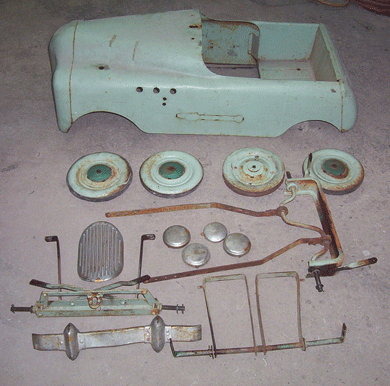 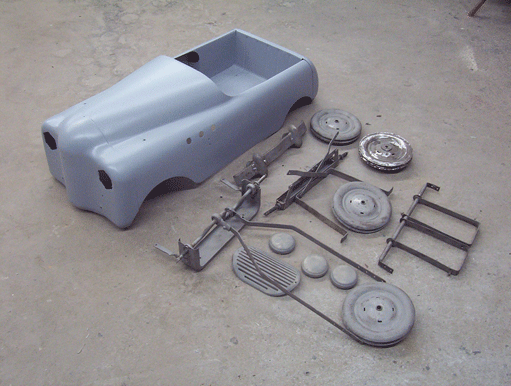 |
On this vehicle there was no deeply embedded rust but it had several repaints over the course of the past 50+ years. there for I decided to media blast the body and the parts. Once this had been completed I proceeded to work the numerous dings and dents out of the body. Then the bare metal was wiped down with metal conditioner. |
 |
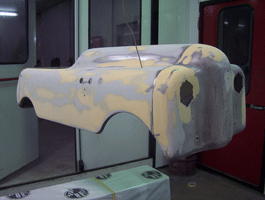 |
 |
This was followed by the application of body-filler. As you can see from the photos the body damage was rather extensive. Once the body-filler was sanded to the proper contours of the body it was followed up by a coat of polyester putty to smooth out the smaller imperfections and to sharpen up the body lines and fill in the pin holes left behind by the courser body filler. |
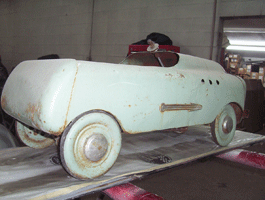 |
 |
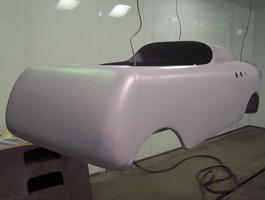 |
Once this was completed the bodywork was wiped down and then three coats of a urethane two part primer was applied, which currently brings you up to date. |
 |
  |
 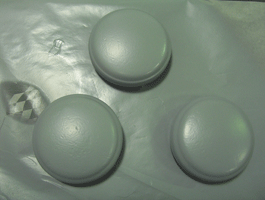 |
Once the primer has dried I reassembled the running gear to make sure everything fit properly and to setup the alignment of the components so I could begin the fabrication of the steering shaft. The original was missing and the replacement was incorrect, and very crudely installed. Having consulted photos and taken measurements off of an existing unaltered car I was able to get this accomplished in relatively short order. My next step will be the fabrication of the gear selector. |
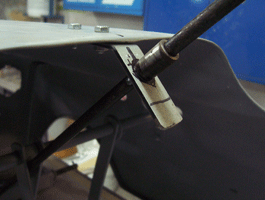 |
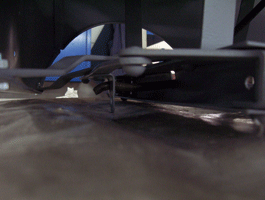 |
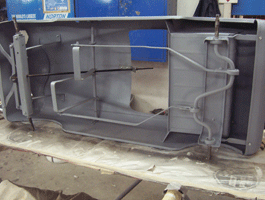 |
The components for the gear selector were fabricated from 3/16 and 1/4 inch bar stock. I then used 1/2 inch steel tubing to sleeve over the steering rod and then welded it to the cowl mounting bracket. A wooden ball was purchased at the hardware store to complete the original look. |
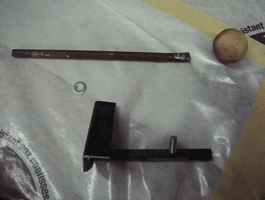 |
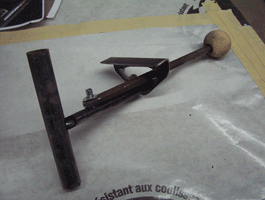 |
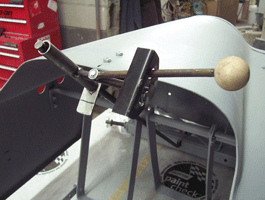 |
In an attempt to create an original look for this car I decided to fabricate a “banjo” style steering wheel. The outer ring was made from 1/2 inch solid steel round bar, and the spokes from 3/16 rod. Once I shaped it I welded the joint and then measured and calculated the position of the spokes. This is where reference photos proved crucial, as the original steering wheel was missing. At this stage I have only mocked up the project. This will require additional drilling and welding, plus the fabrication of the hub before completion. |
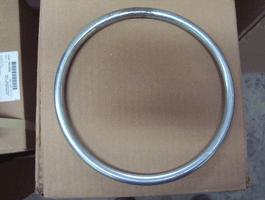 |
 |
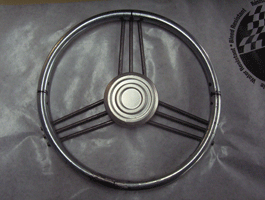 |
The hub for the steering wheel was created by stacking and welding 3 progressively sized steel washers together, then welding a bushing to it to fit over the steering column. Once this was done I cut and carefully measured all of the spokes for preassembly. Then they were clamped firmly in place and welded. I used an old 2.5 inch hub cap to cover the center of the wheel hub, and then folded the tabs over to secure it. Next week I will be working on fabricating the windscreen. |
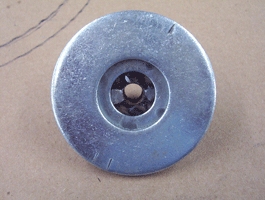 |
 |
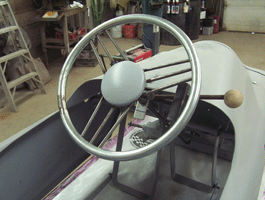 |
In fabricating the windscreen frame I consulted photos and took measurements before laying out a template to locate where I wanted the mounting holes. I then drilled three, 3/16 holes. The upper hoop was formed from 3/16 rod and mounted in the holes. The lower cowl piece (with the center post which I previously attached ) was carefully formed from the same stock by gently bending and tweaking it to conform to the contours of the cowl. Once in place it was clamped and welded. |
 |
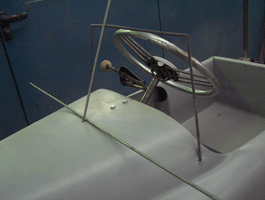 |
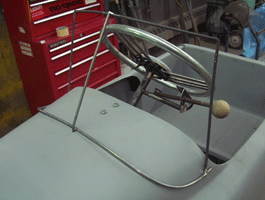 |
|
“With the original headlights missing I decided to adapt a pair of after market ones instead. In order to mount them in place I had to fabricate a bracket from 1 inch channel and drill a 7/8th hole in the center to accommodate the shaft of the headlight assembly. Once this was completed I scored two slots on each side of the shaft to allow a spring clip to slide up against the channel to secure it. I think the outward appearance is quite in keeping with the original look. The battery source will be addressed later.” |
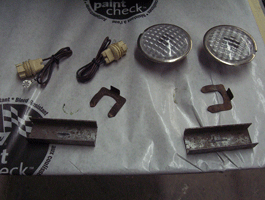 |
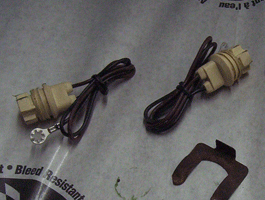 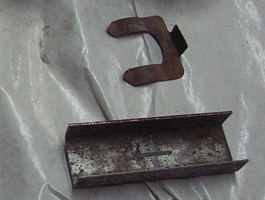 |
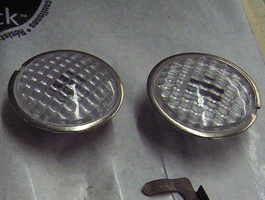 |
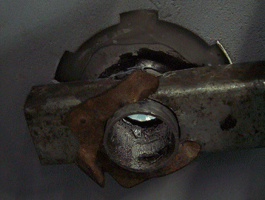 |
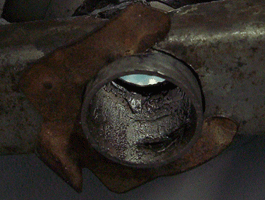 |
 |
 |
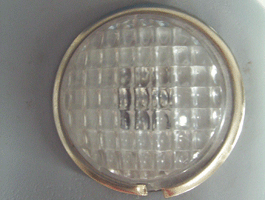 |
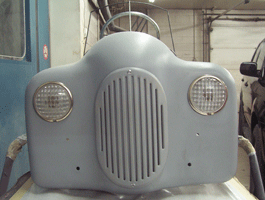 |
With most of the components fabricated I decided to see what I could do regarding the port holes on the front fenders. I decided to dress these out by using 1/2 inch brass tarpaulin grommets and backing them up with screen mesh. I also tried mounting the wheels on the axles to ensure that they would turn easily. Prior to priming the parts I taped the ends of the axles up with masking tape to avoid build-up and issues with fit. Next week I will be sanding and prepping the body and parts as well as choosing my paint colors and recreating the graphics |
 |
 |
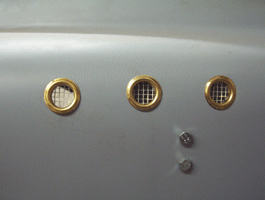 |
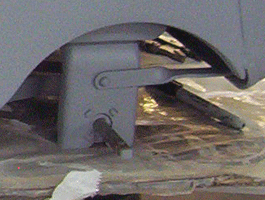 |
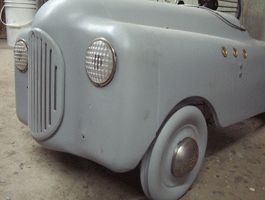 |
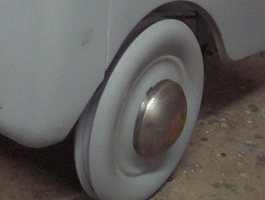 |
Now with nearly all of the, steering wheel /gear selector and windscreen components fabricated I prepped and primed them. I also masked off the grille area and sprayed it satin black. I decided to do this to create a look of depth and realism as opposed to having the body colour showing through. Speaking of which, I have decided to go with the original colour, or as close as I can match to it. The one area that retained a sample of unweathered original paint was under the hub caps. I matched this to a BASF colour chip index card and I think I managed to get it very close. The next step will be sanding and prepping the body and wheels. |
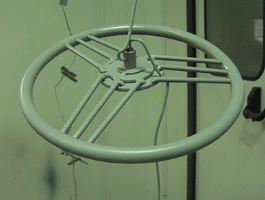 |
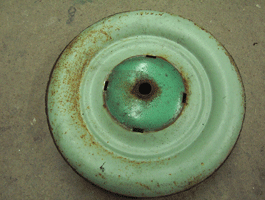 |
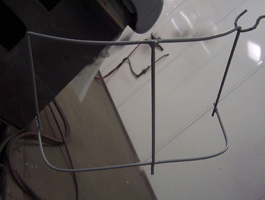 |
 |
 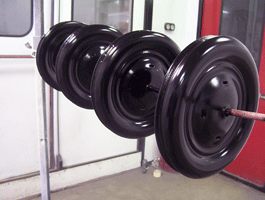 |
 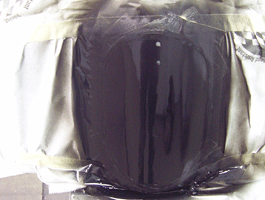 |
With all of the components and hardware having been fabricated and primed I turned my attention back to the body of the car. The process of sanding the primer was done by first masking the previously painted area where the grille is located, and then I applied a guide coat of soot over the entire body (inside and out) in order to access the progress during sanding in terms of obtaining the proper contours and the removal of scratches and slight imperfections in the primer, etc. This tedious job was achieved with first using 320 grit sandpaper on a rubber block and then progressing to 400 grit on an orbital sander (where possible) and then 500 grit paper by hand. The next task will be the application of paint. |
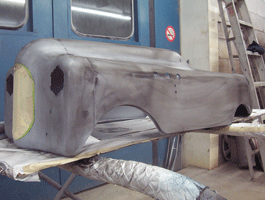 |
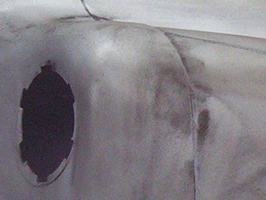 |
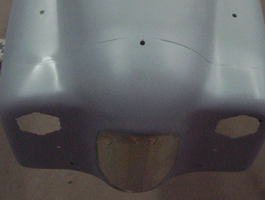  |
“Once all of the sanding of the primer was completed and the wheels were masked for two-toning all of the parts were washed down with a prep cleaner to remove any and all dust and surface contaminates, such as skin oils, emitted through the touching of hands, which can adversely effect the ability of the paint to adhere properly.
|
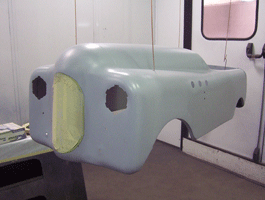 |
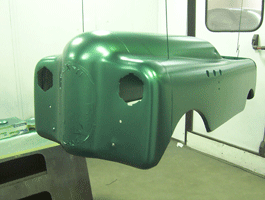 |
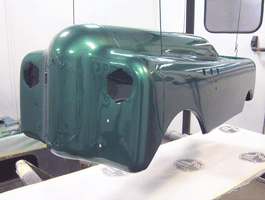 |
Once this was completed all of the surfaces were wiped down with a “tack rag” (This is a varnish impregnated cloth that removes any fine dust particles prior to spraying) As I mentioned in the tear-down process I managed to find a sample of the original paint under the hub caps. I matched this at the shop using our BASF colour index. I then mixed the paint in 90 LINE which is a low VOC water based product.
|
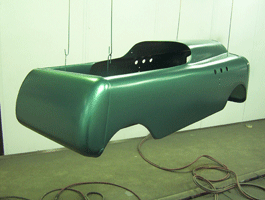 |
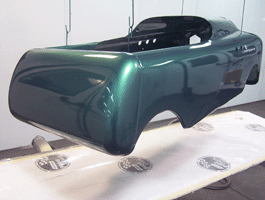 |
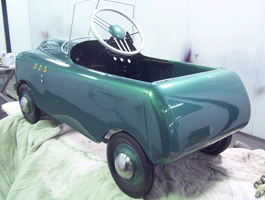 |
After applying three coats of colour (using the “tack Rag” after each coat) I allowed the paint to fully flash off (15 mins.) before applying the clear coat. For this process I used 923-200 clear which is also VOC compliant. Two coats were applied and allowed to dry over night.
|
 |
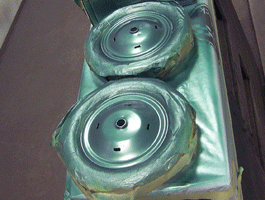 |
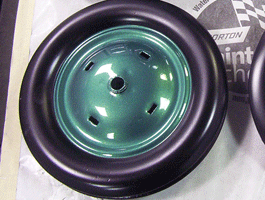 |
The drive train was painted a contrasting black and the wind screen, steering wheel and bumper were sprayed with a metallic silver flake base and clear coated as well. I decided not to paint the reproduction hub caps that I acquired I instead opted to polish the steel with a high grade metal polish and then clear coated them. |
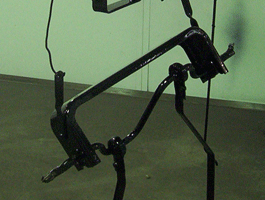 |
 |
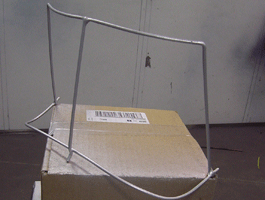 |
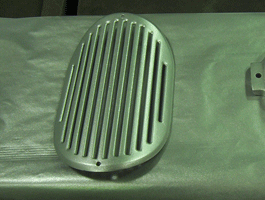 |
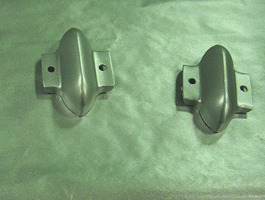 |
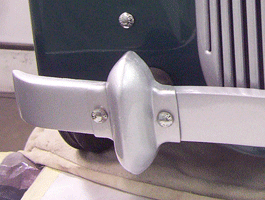 |
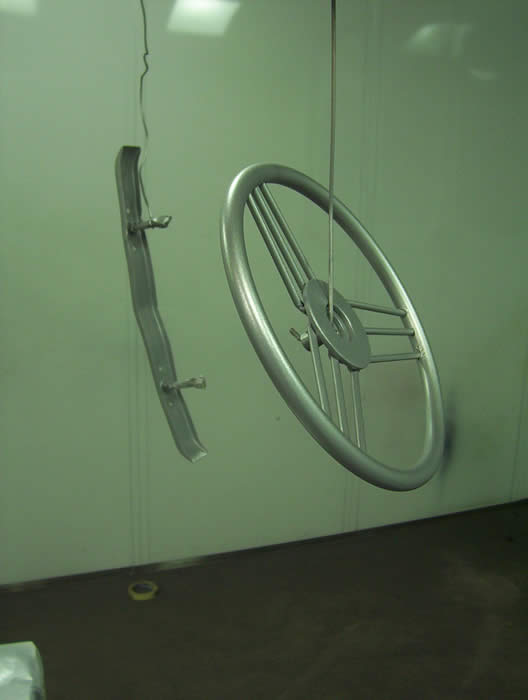 |
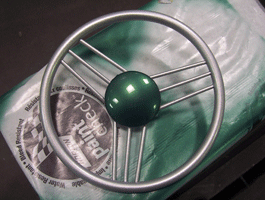 |
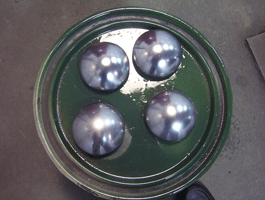 |
After everything was allowed to dry over night I started carefully reassembling all of the parts. First starting with the rear saddle and working forward until all of the drive train was complete. I then moved on to fitting the headlights, steering wheel, bumper, etc . The remainder still needs to be assembled and the decals and stripes need to be applied before completion, which will be in the next instalment. |
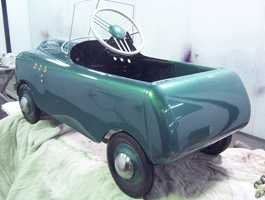 |
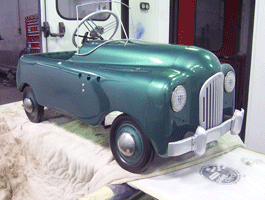 |
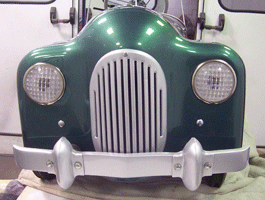 |
“ Once everything was assembled I proceeded to apply the decals, which included the Thistle badge on the bonnet and the lubrication instruction on the inner left side of the body. Both of which were supplied through this website. The “Chieftain stripes and the pinstripes on the wheels were done in vinyl which completed the project. I would like to thank Joop Vendrik for all of the work that he has put into creating and maintaining this great web site. It is his passion that feeds collectors, restorers like myself, and I truly appreciate the opportunity that he has given me in terms of sharing this project with all of you fellow enthusiasts.......keep pedaling.” |
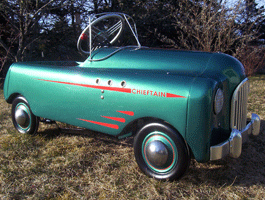 |
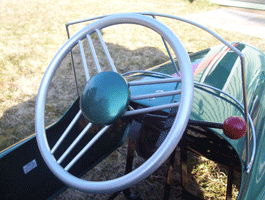 |
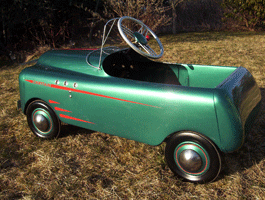 |
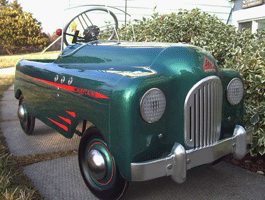 |
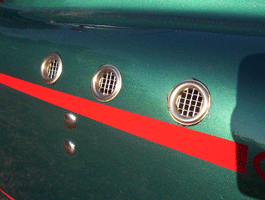 |
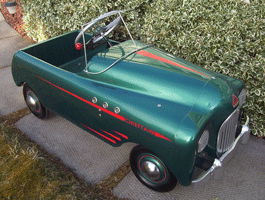 |
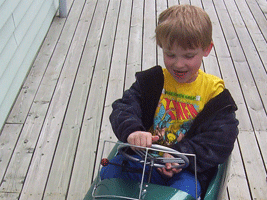 |
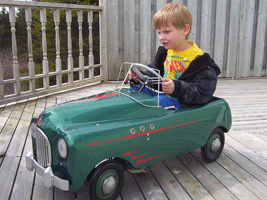 |
 |
Back to the Home Page: Click here |
For several Thistle pedal cars we restored and reproduced complete decal sets : click here |